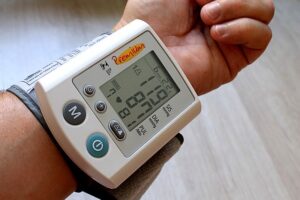Structural health monitoring or SHM is a crucial technique thanks to the development of architectural design. Its main goal is ensuring safety for the civil infrastructure. Due to the fiber optic sensors‘ benefits, a great number of the distributed sensing systems have found application in civil engineering as SHM systems.
What is a Structural Health Monitoring System?
Structural health monitoring is a technique of evaluating and monitoring structural health. Thanks to its capability to respond to unfavorable changes, this method is widely used in many fields including aerospace, civil, and energy sectors, etc.
Why is SHM necessary?
All structures are vulnerable to various internal and external factors that can lead to wear or malfunction. There are various reasons that can cause it. For instance, deterioration, problems in construction process, an accident or environmental load, etc. That’s why it is important to implement a monitoring system.
Damage identification systems monitor all the changes in rates in real time 24/7. It gives an opportunity to detect deviations quickly and react properly in a short period of time before significant damage is caused. Therefore, timely maintenance and repair actions reduce the repair time and operating costs.
The structural health monitoring systems provide the following benefits:
- Increased security;
- Detecting of the damages at an early stage of difficulties;
- Continuous tracking;
- Saving of operating costs and time;
- Development of rational management and maintenance strategies, etc.
Typical Fiber Optic Sensors
In accordance with the increase of the number of buildings’ and bridges’ under construction, the health monitoring of the concrete structures has become a topical issue.
1. Temperature Sensors
Most of all, the health of the concrete structure depends on the temperature influence. Its monitoring influences the general quality and thermal resistance of the entire structure.
At early stages, the temperature shifts affect structure’ cracks and thermal stresses that are usually caused by hydration. Besides, with the help of the two crucial parameters, the maximum temperature and the temperature trend, specialists predict the future structural health.
In addition to that, there is a special system called Distributed Temperature Sensing (DTS) that helps to monitor the cracks that may appear in the concrete structures. Its low cost and well-considered technology are believed to be important advantages in measurement. Other advantages of the FBG temperature sensors are their accurate measurements and fast response. Besides, temperature sensors are perfect for hard-to-reach places and massive sensing networks.
2. Strain Sensors
Another popular type of the fiber optic sensors is FBG strain sensors. To find out the deformation degree, the structure’s density information is used. In fact, the stability of the structure depends on its strength. It is safe when the structure strength is greater than the applied pressure.
After calibration, the unit acquires the features of a force transducer. The strain sensor transfers the component strain accurately. Characteristics such as light phase, frequency, amplitude, or polarization state, allow operators to monitor the health of the structure. All these features change under the influence of deformation.
Due to the common features of the strain sensors, like small size, they are universal sensors for force and load control. They are often used in large machines and steel constructions where there are high loads.
3. Displacement sensors
The other type of sensors are displacement sensors the main task of which is displacement measurement. It becomes possible by the constant measurement of the distance between the sensor and an object.
These FBG sensors are frequently used because they are greatly resistant to external impacts like corrosion and electromagnetic interference. Moreover, they are applied where long term reliability and safety are demanded.
If we compare them to the strain sensors and temperature sensors, FBG displacement sensors can’t measure quantity using only fiber optic sensors. They utilize FBG response to its equivalent Bragg wavelength.
Displacement sensors are perfect for monitoring of the civil engineering structures 24/7. They are suitable for monitoring aircraft, concrete structures and other industrial applications.
4. Pressure sensors
FBG pressure sensors use reflected wavelength analysis. This kind of sensors measure various parameters under severe conditions like high temperature or pressure rates.
The fiber pressure sensor’ operational principle is based on the fact that external factors affect the Bragg wavelengths by influencing the pressure sensor. In such a case, changes of the FBG’s physical or geometrical properties are implicitly measured.
FBG pressure sensors have the same characteristics as the other fiber optic sensors. They are small, portable and provide the highest accuracy and stability.
Usually, fiber pressure sensors measure the levels of liquids and gas in pipelines or tanks. They are used for the indirect flow control in tanks and pipes. FBG pressure sensors are crucially essential in various industrial fields like liquid level monitoring in oil storage tanks, gas turbine engines, etc.
In conclusion, we should say that any of these fiber optic sensors can perform measurements as a structural health monitoring. According to the existing situation and characteristics, the specialists choose the suitable variant, thus ensuring safety for any kind of civil construction.
Optromix is a fast-growing vendor of fiber Bragg grating (FBG) product line such as fiber Bragg grating sensors, for example, fbg strain sensors, FBG interrogators and multiplexers, Distributed Acoustic Sensing (DAS) systems, Distributed Temperature Sensing (DTS) systems. The company creates and supplies a broad variety of fiber optic solutions for monitoring worldwide. If you are interested in structural health monitoring systems and want to learn more, please contact us at info@optromix.com


 A group of scientists from China has designed a very sensitive tiny
A group of scientists from China has designed a very sensitive tiny  Fiber optic sensors
Fiber optic sensors Fiber optic technology
Fiber optic technology  The
The 
 The pressure is one of the most physical parameters in a process industry, but traditional pressure sensors, mostly based on electrical strain gauge, vibration wire, mechanics, and suchlike are unable to adapt to the harsh environment and online monitoring at a long distance. Due to
The pressure is one of the most physical parameters in a process industry, but traditional pressure sensors, mostly based on electrical strain gauge, vibration wire, mechanics, and suchlike are unable to adapt to the harsh environment and online monitoring at a long distance. Due to